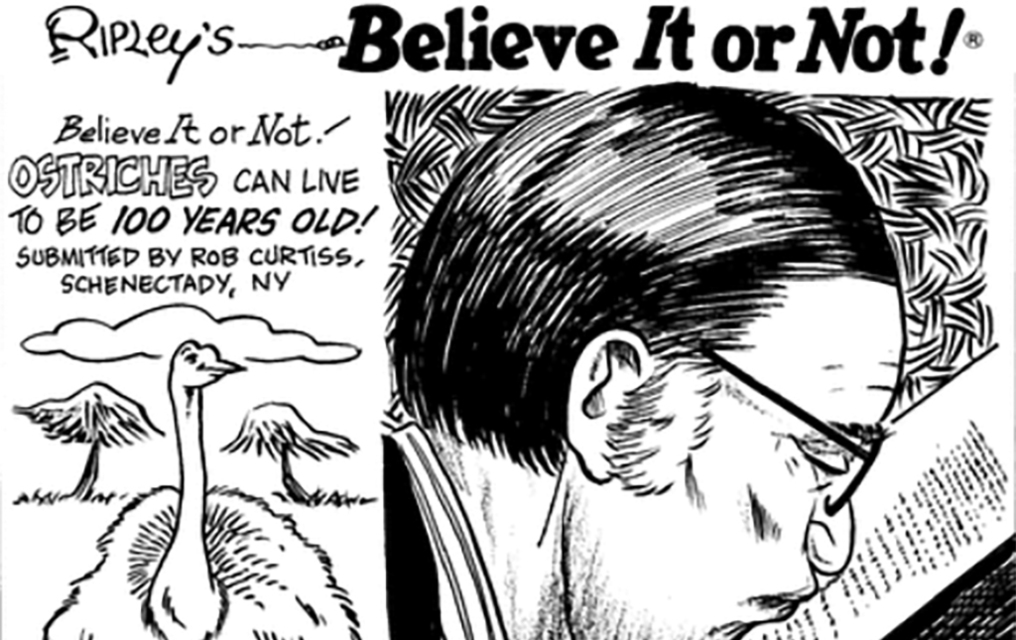Ripley's Believe It or Not by Ripley’s Believe It or Not! for December 27, 2014
Transcript:
In South Korea, the 4th floor is often labeled F because the number 4 is considered unlucky. The Japanese call their green traffic lights blue, as historically they do not distinguish between the two colors. Frederick the Great of Prussia (1712-1786) took his coffee with champagne instead of water, and added mustard!






Templo S.U.D. about 10 years ago
“Midori” is the Japanese word for “green” whereas “ao” is “blue.”
BRI-NO-MITE!! Premium Member about 10 years ago
I heard in China they go on red and stop on green.There is a scene in The Last Emperor that corroborates this. A bunch of people on bicycles are stopped at a green light. It turns red and they all start moving.
phelpsgates about 10 years ago
This is also true (no 4th floor) in China. The number 4 (四) and the word for death (死) are both pronounced “si”. Never give a gift in China in multiples of 4 items!
goweeder about 10 years ago
“I ‘take’ my coffee with milk, never water. Its caustic.”~~~~~~~~~~~~~~~~~~~~~~~~. Just out of curiosity, what liquid do you use to brew your coffee?
Stephen Gilberg about 10 years ago
To be fair, unlit green lights always looked blue to me.
tuslog64 about 10 years ago
How do they treat 13th floors?
Gernsback about 10 years ago
I wonder if starbucks knows about this?
sdjamieson Premium Member about 10 years ago
I believe the stop-on-green/go-on-red traffic lights were a short-lived experiment after the revolution, red being the color of communism. I heard this from a friend who was working on a PhD. in Chinese culture, so I think it’s sound.
John W Kennedy Premium Member about 10 years ago
“Four” sounds like “death” in Chinese, and the superstition has spread throughout SE Asia. (The Chinese language has long dominated the area, just as English dominates Europe today.) Thirteen, on the other hand, is not treated specially at all, except under Western influence.
Welsh also traditionally treats treats blue and green differently from English, although it has been sliding over the years in the English direction.
Most languages don’t regard pink as a separate color, and just call it light red. On the other hand, Russian has separate words for dark blue and light blue.
benbrilling about 10 years ago
A century or so ago baby boys wore pink and girls wore Blue. Pink being regarded as red-like and more fiery and masculine.
benbrilling about 10 years ago
I don’t know how any culture could completely disregard the difference between green and blue. (Unless there was a problem with their vision.)
english.ann about 10 years ago
Does all the seawater around Japan influence them to equate green and blue? Do they have any words for aqua, which is a mixture of green and blue? The sea can be green, aqua or blue.
John W Kennedy Premium Member about 10 years ago
There is nothing remotely unbelievable about Japanese not distinguishing blue and green. I don’t know more than half a dozen words of Japanese, so I won’t tackle the issue of whether it’s true or not, but any linguist will tell you that, in general, different languages have different color spaces, and that it has nothing to do with color blindness. See http://en.wikipedia.org/wiki/Color_term for a general discussion.